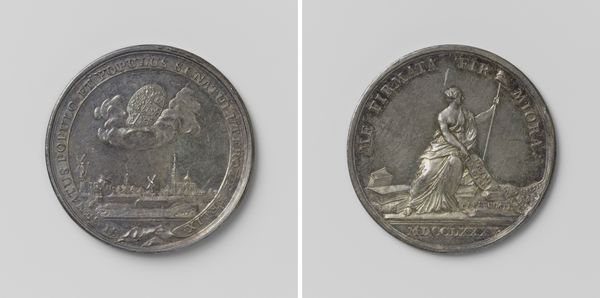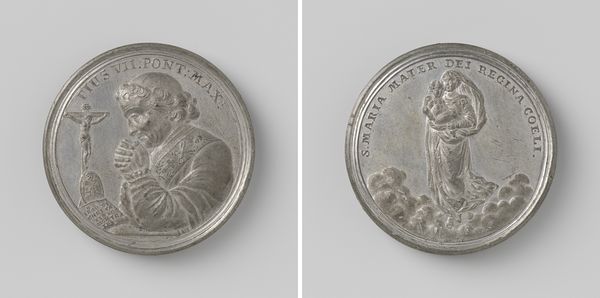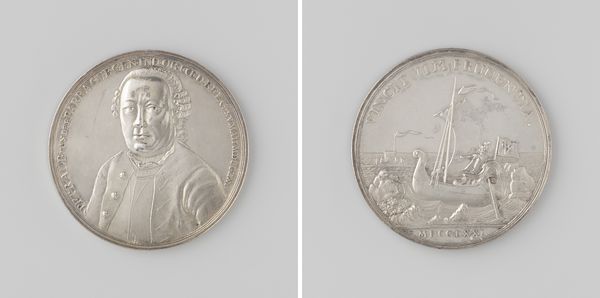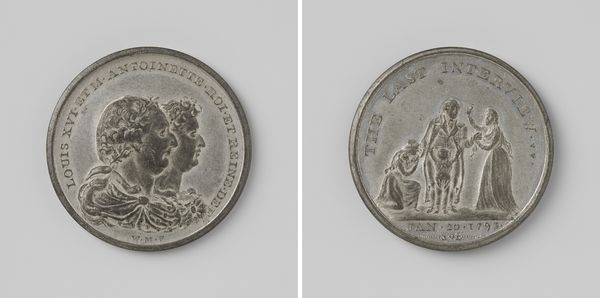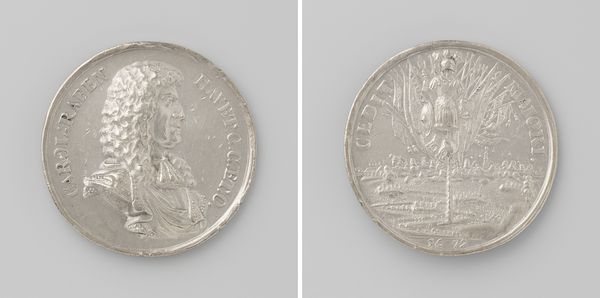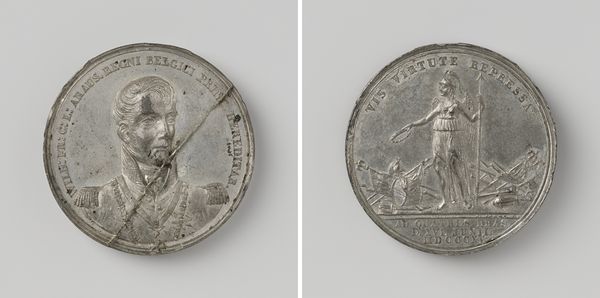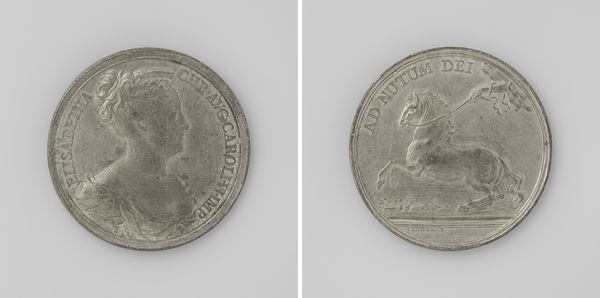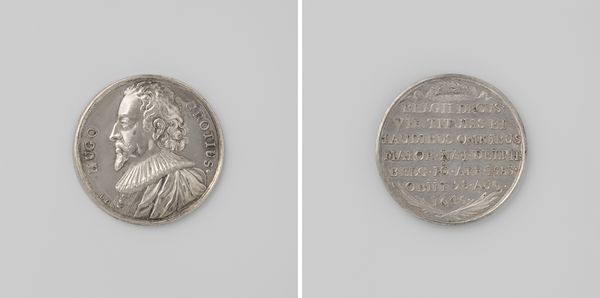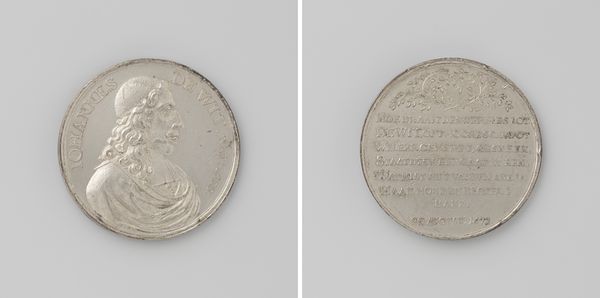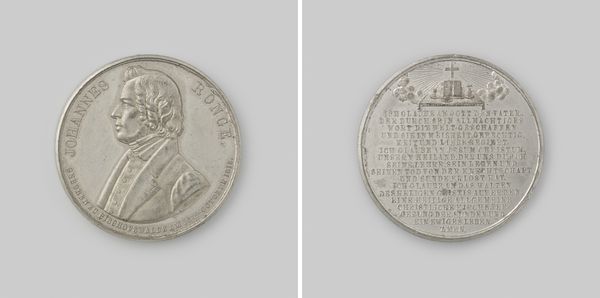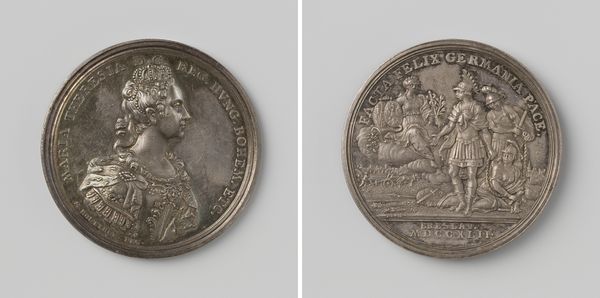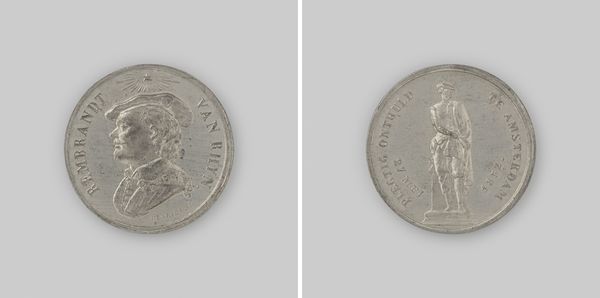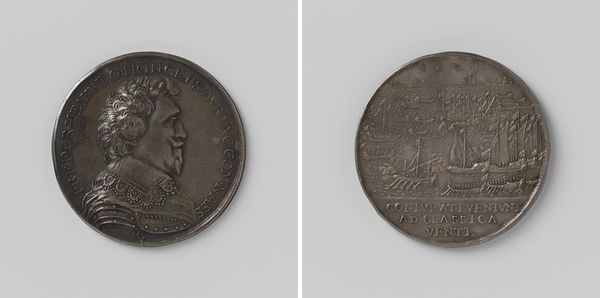
metal, sculpture
#
medal
#
neoclacissism
#
metal
#
sculpture
#
sculpture
Dimensions: diameter 5.1 cm, weight 54.81 gr
Copyright: Rijks Museum: Open Domain
Curator: Here we have a striking example of Neoclassical artistry, a metal medal created in 1769 by Johann Heinrich Meil the Elder. The work is a portrait of Christian Furchtegott Gellert, the noted German poet. Editor: Oh, wow, it’s like looking into the past—literally! It’s fascinating how the artist managed to capture so much personality on such a small, metallic surface. The detail is impressive! I immediately notice the texture in the wig—it looks so…fluffy, almost. Curator: The piece adheres strictly to the Neoclassical emphasis on form and idealized representation. Notice the crispness of the profile, the way the lines define the intellectual character. The surrounding inscription reinforces this elevation of Gellert to a philosophical ideal. Semiotically, this medal operates as both a portrait and a symbol of intellectual achievement. Editor: I love the way Gellert almost seems to peer out at us from another time. And then, the other side has a really unique depiction, right? Curator: Precisely! The reverse displays a personification of, presumably, enlightenment, seemingly relinquishing possessions to cherubic figures. It is thought to reflect the charitable character of Gellert who never married and bequeathed his modest belongings. Editor: To me, it feels like an allegorical goodbye—the Enlightenment waving farewell to the earthly realm. Maybe I am reading into it too much, but art always seems like a conversation across centuries. And there's also some Latin text that speaks of heritage. Curator: "HAEREDIBUS PILEUM RELINQUENS", meaning leaving a cap for heirs, indeed alludes to inheritance, not material wealth. These classical references offer a rich context for appreciating Meil's deliberate artistic choices within the broader Neoclassical movement. Editor: Looking at it now, I'm left with this impression of permanence versus change. This poet, captured in solid metal, continues to provoke thought, even as everything around him—and us—is fleeting. Curator: A poignant observation! Yes, the work serves as an enduring testament to the subject and the moment. A reminder perhaps that certain human values persist, crystallized within the artwork's elegant structure.
Comments
No comments
Be the first to comment and join the conversation on the ultimate creative platform.
